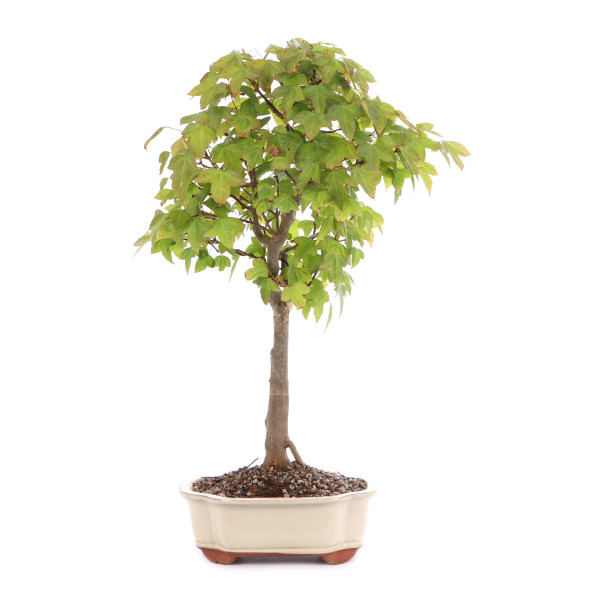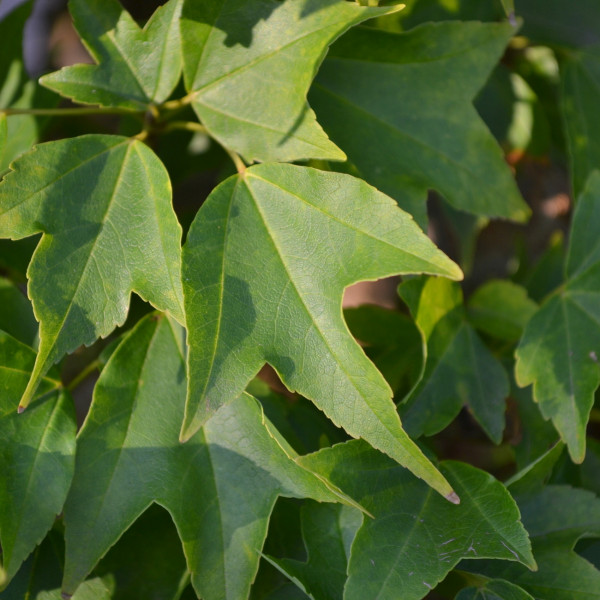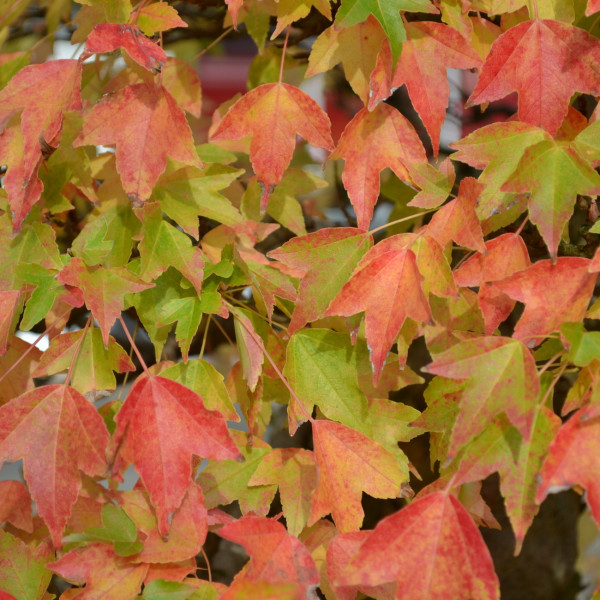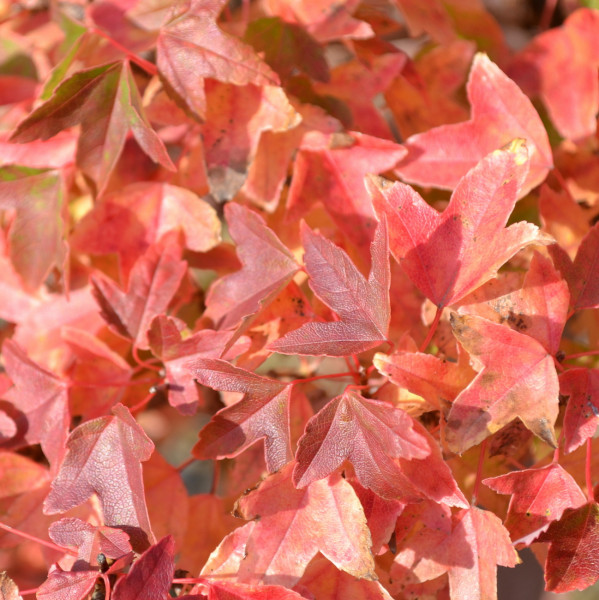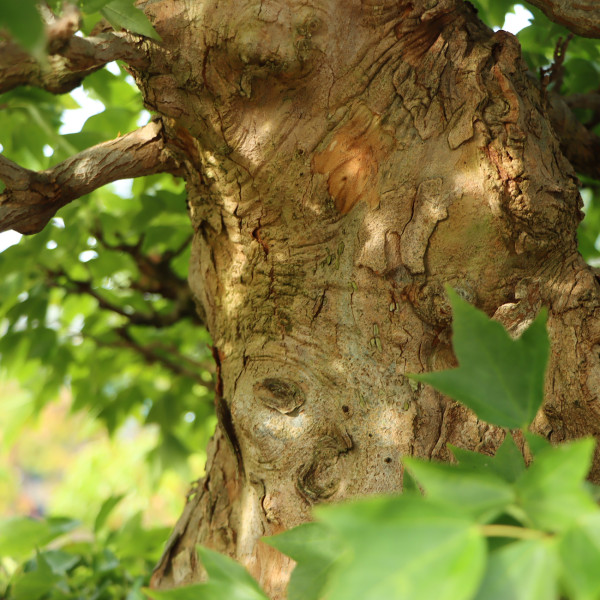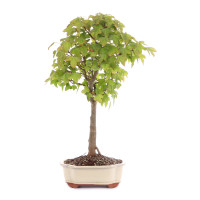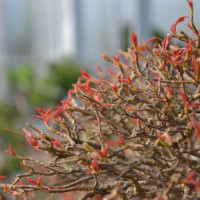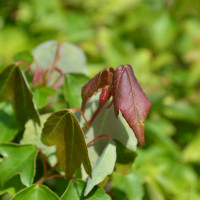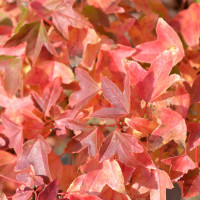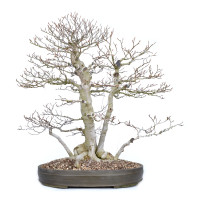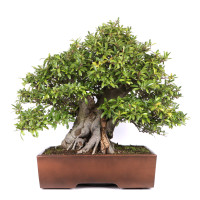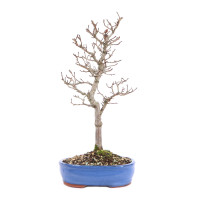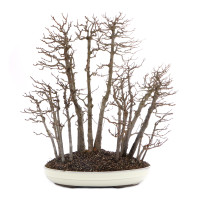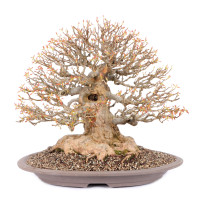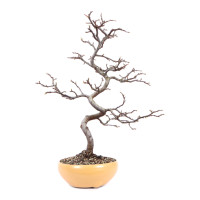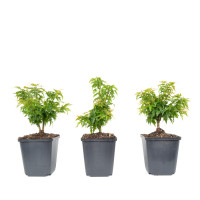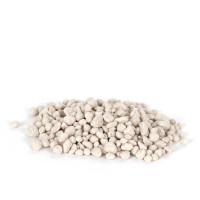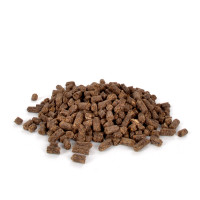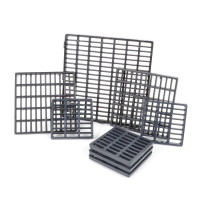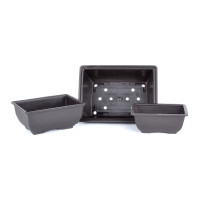- Order number: 1013-K-24-1381
- Height: 50 cm (incl. pot)
- Foliage: deciduous
- Age: ca. 10 years
- Bonsai Pot: ceramic pot
- Characteristics: attractive autumn colour
- Origin: Germany
Acer buergerianum - Trident Maple
General:
The natural range of the trident maple is in Japan, east China and Taiwan. In the mountain forest regions of its homeland, it develops into a small tree or large shrub a good 10 meters high. The leaf is characteristically 3-lobed and the autumn color ranges from scarlet to orange-yellow and is therefore very spectacular. The wood is beige-brown to olive-brown and the bark is furrowed only in old age. The species is very vigorous and easy to cut. Incidentally, Heinrich Buerger worked as a researcher and pharmacist in the Far East and was the first to describe this type of maple, which is exotic to Europe. In honor of this, the species was named after him.
Care as a bonsai:
The trident maple is one of the most popular types of plants that are cultivated as bonsai. Over time, the leaf becomes quite small and the crown structure becomes very fine through consistent pinching and a regular cut. Due to the vigor, many styles are possible. The root growth is also quite strong and therefore the species is often seen as a root stem shape or growing with the roots over a stone. However, the strong root growth also requires regular root pruning. Young plants up to an age of about 4 years are sensitive to frost. They can tolerate frost to a limited extent, but not extreme frosts. Then the trident maple become more and more hardened, so that medium-aged plants are largely frost-hardy. However, late frosts in spring are problematic. Because of the rising temperatures, root growth begins, but at night-time minus temperatures the root tips can freeze again. So special caution is required here! Even a strong shape pruning in spring should only be carried out in combination with a root pruning, as maples “bleed”. This means that the increasing root pressure for the shoot leads to an uncontrolled loss of the sap and the plants can "bleed to death".

